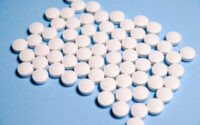Clinical Research MCQ
Checking all the Clinical Research MCQ Papers!! Later, check the Latest Clinical Research Associate Exam MCQ. Clinical Research Coordinator MCQ Papers pdf Free Download available here. Hence, candidates who are going to write exam may download Clinical Research Assistant MCQ for free of cost.

Aspirants can also get Clinical Research MCQ Papers. Clinical Research Nurse MCQ Papers are uploaded here to help the candidates who are appearing for the Exam. The Applicants who are about to start their preparation for the Exam can refer to the Basic Clinical Research MCQ papers. So, interested candidates can click on the direct links given below for downloading the Clinical Research MCQ Papers along with Solutions or Answer Keys for freshers.
MCQ on Clinical Research
1. All of the following are transmitted by respiratory route except
(a) Influenza virus
(b) SARSCoV2 virus
(c) Respiratory Syncytial virus
(d) Rotavirus
2. Scalded skin syndrome toxin is released by
(a) Streptococcus pyogenes
(b) Staphylococcus aureus
(c) Enterococcus faecalis
(d) Corynebacterium diphtheria
3. Mycobacterium tuberculosis complex includes all except
(a) M. tuberculosis
(b) M. bovis
(c) M. leprae
(d) M. caprae
4. Common name of Trichuristrichiura is
(a) Pinworm
(b) Roundworm
(c) Hook worm
(d) Whipworm
5. Scrub typhus is caused by
(a) R. prowazekii
(b) R. typhi
(c) O. tsutsugamushi
(d) Coxiellaburnetii
6. Who is known as Father of Genetics
(a) Morgan
(b) Mendel
(c) Watson
(d) Bateson
7. Cystic fibrosis is
(a) Sex-linked recessive disorder
(b) Autosomal dominant disorder
(c) Autosomal recessive disorder
(d) Sex-linked dominant disorder
8. Homozygosity and heterozygosity of an individual can be determined by
(a) Black cross
(b) Self- fertilisation
(c) Test cross
(d) All cross
9. The alternate form of a gene
(a) Alternate type
(b) Recessive character
(c) Dominant character
(d) Allele
10. Which of the following repeated sequences includes an open reading frame for reverse transcriptase
(a) LINE
(b) SINE
(c) Segmental duplication
(d) DNA transposon
11. DNA helices enzyme involved in base excision repair mechanism is
(a) DNA helicase I
(b) DNA helicase II
(c) DNA helicase III
(d) DNA helicase IV
12. In humans, each cell normally contains __________of chromosomes
(a) 11 pairs
(b) 23 pairs
(c) 32 pairs
(d) 46 pairs
13. In a family, father is having a disease and mother is normal. The disease is inherited to only daughters and not to sons. What type of disease is this
(a) Sex linked dominant
(b) Sex linked recessive
(c) Autosomal dominant
(d) Autosomal recessive
14. Which of the following is not a type of chromosomal aberration?
(a) Duplication
(b) Translocation
(c) Mutations
(d) Inversion
15. A women with one gene for haemophilia and one gene for colour blindness marries a normal man. How will the progeny be
(a) Haemophilic and colour blind daughters
(b) All sons and daughters are haemophilic and colour blind
(c) 50% haemophilic and colour blind sons and 50% normal sons
(d) 50% haemophilic and colour blind sons and 50% colour blind daughters
16. Haemophilia is more common in males because it is a
(a) Recessive character carried by Y -chromosome
(b) Dominant character carried by Y – chromosome
(c) Dominant trait carried by X- chromosome
(d) Recessive trait carried by X – chromosome
17. The DNA structure was investigated in the year
(a) 1943
(b) 1953
(c) 1963
(d) 1973
18. The helical nature of DNA was revealed by the work of?
(a) Linus Pauling
(b) Rosalind Franklin
(c) Maurice Wilkins
(d) Louis Pasteur
19. Translation is a process of
(a) mRNA synthesis
(b) tRNA synthesis
(c) Protein synthesis
(d) Nucleic acid synthesis
20. Proto-oncogenes are possessed by the
(a) RNA virus
(b) DNA virus
(c) Cells Themselves
(d) Pathogenic bacteria
| Interview Question | MCQs |
| Objective | Questions and Answers |
21. Polymerase Chain reaction (PCR ) was invented by
(a) Kary Mulis
(b) James Watson
(c) John Hopkins
(d) Hargobind Khorana
22. Tag polymerase is a
(a) Heat-stable
(b) Buffering
(c) Denaturant
(d) Large
23. The temperature cycles in a polymerase chain reaction are in the order
(a) 95p ,60p , 72p
(b) 60p ,72p , 95p
(c) 72p , 60p 95p
(d) 95p , 72p 60p
24. Which of the following is used to precipitate the nucleic acids?
(a) Glycerol
(b) Ethanol
(c) Methanol
(d) Ethylene
25. Which type of gel is used for large nucleic acids?
(a) Acrylamide
(b) Cellulose
(c) Agarose
(d) Sephadex
26. Which technique is used to separate nucleic acids of size greater than 25 kb?
(a) SDS-PAGE
(b) Pulsed –field electrophoresis
(c) 2D-gel electrophoresis
(d) Isoelectric focusing
27. The procedure by which DNA gel is transferred to a membrane is termed as
(a) Blotting
(b) Centrifugation
(c) Electrophoresis
(d) Paper chromatography
28. Which of the following can be analyzed using a Northern blot?
(a) RNA
(b) Carbohydrates
(c) Proteins
(d) DNA
29. Which enzyme is used in the unwinding of DNA
(a) Ligase
(b) Topoisomerase
(c) Helicase
(d) Exonuclease
30. What is resolution
(a) Exchange of DNA fragments
(b) Heterochromatin structure formation
(c) Regeneration of duplex DNA molecule
(d) Cleavage of holiday junction
31. Which of the following does not take part in gene expression
(a) Transcription
(b) RNA processing
(c) Replication
(d) Translation
32. Which of the following will form a palindromic sequence
(a) AGTCCTGA
(b) GTTCCAAG
(c) ATTGCAAT
(d) GTTGGAAC
33. DNA synthesis can be measured by estimating the incorporation of radio labelled
(a) Thymine
(b) Guanine
(c) Cytosine
(d) Adenine
34. In eukaryotes, the mismatch repair mechanism is initiated and directed by
(a) Methylated DNA strand
(b) Acetylated DNA strand
(c) Strand specific nicks
(d) Double stranded breaks
35. Which of the following processes does not occur in prokaryotes
(a) Transcription
(b) Splicing
(c) Translation
(d) Replication
36. Which of the following databases can be used to access text information about human diseases?
(a) EST
(b) PBD
(c) OMIM
(d) HTGS
37. An example of homology & similarity tool
(a) PROSPECT
(b) EMBOSS
(c) RASMOL
(d) BLAST
38. Which of the following amino acid is least mutable according to PAM scoring matrix
(a) Alanine
(b) Glutamine
(c) Methionine
(d) Cysteine
39. You have a reasonably short , typical , double stranded DNA sequence . Basically , how many proteins can it potentially encode
(a) 1
(b) 2
(c) 3
(d) 6
40. Normalised BLAST scores (also called bit scores)
(a) Are unitless
(b) Are not related to the scoring matrix that is used
(c) Can be compared between different BLAST searches , even if different scoring matrices are used
(d) Can be compared between different BLAST searches, but only if the same scoring matrices are used
41. A PSI-BLAST search is most useful when you want to do the following
(a) Find the rat ortholog of a human protein
(b) Extend a database search to find additional proteins
(c) Extend a database search to find additional DNA sequences
(d) Use a pattern or signature to extend a protein search
42. Which of the following BLAST programs uses a signature of amino acids to find proteins within a family?
(a) PSI-BLAST
(b) PHI-BLAST
(c) MS BLAST
(d) WormBLAST
43. An example of an operational taxonomic unit (OTU) is
(a) Multiple sequence alignment
(b) Protein sequence
(c) Clade
(d) Node
44. Deposition of cDNA into inert structure is
(a) DNA fingerprinting
(b) DNA polymerase
(c) DNA probes
(d) DNA microarray
45. Analysing or comparing entire genome of species
(a) Bioinformatics
(b) Genomics
(c) Proteomics
(d) Pharmacogenomics
46. Characterizing molecular component is
(a) Genomics
(b) Cheminformatics
(c) Proteomics
(d) Bioinformatics
47. Most commonly used measure of central tendency is
(a) Mode
(b) Median
(c) Mean
(d) Range
48. Difference between the minimum value and the maximum value of the observations
(a) Variance
(b) Interquartile range
(c) Range
(d) Standard deviation
49. The following measure is not influenced by extreme values in a data set
(a) Arithmetic mean
(b) Interquartile range
(c) Range
(d) Interquartile and range
50. When the data set contains too many extreme values, the most representative average value is
(a) Mode
(b) Median
(c) Mean
(d) Variance



